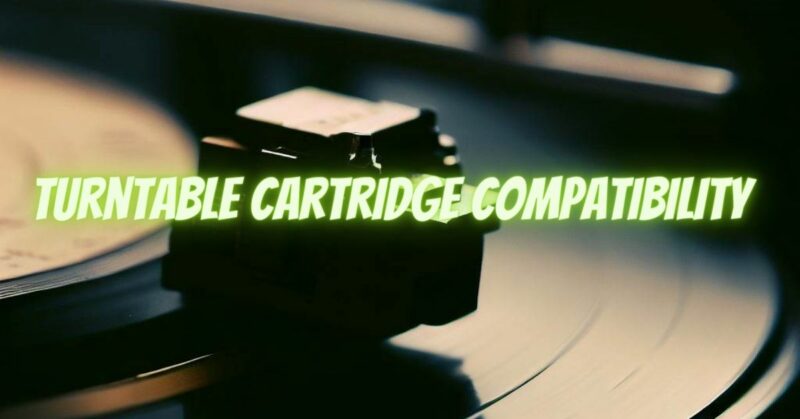In the realm of analog audio, turntables remain a steadfast symbol of nostalgia and high-fidelity music enjoyment. One crucial component of a turntable that significantly impacts sound quality is the cartridge. The cartridge is the small device responsible for translating the grooves on vinyl records into electrical signals that can be amplified and played through speakers. However, not all cartridges are created equal, and understanding turntable cartridge compatibility is essential for achieving optimal sound reproduction.
The Role of the Cartridge
The cartridge is a delicate assembly consisting of a stylus, cantilever, magnets, and coils. As the stylus traces the grooves on a vinyl record, it generates vibrations that are converted into electrical signals. These signals are then sent through the tonearm and onto the amplifier, eventually producing the audio that we hear.
Factors Influencing Compatibility
- Mounting Type: Cartridges are available in different mounting types – standard mount (also known as 1/2″ mount) and P-mount (Plug-and-Play mount). Standard mount cartridges are more versatile and can fit a broader range of turntables with a removable headshell, whereas P-mount cartridges are designed for turntables with fixed tonearms and require minimal adjustments.
- Tracking Force: Tracking force refers to the downward pressure exerted by the stylus on the record’s grooves. Different cartridges require specific tracking forces for optimal performance. Turntables often have an adjustable counterweight to achieve the correct tracking force, but it’s essential to ensure that the turntable’s weight range matches the requirements of the cartridge.
- Output Level: Cartridges have varying output levels, typically measured in millivolts (mV). This factor affects the compatibility with phono preamps or amplifiers. Low-output cartridges require more amplification and are suitable for systems with high-quality preamps, while high-output cartridges are more compatible with entry-level setups.
- Tonearm Compatibility: The length and design of a turntable’s tonearm influence the compatibility with different cartridges. The cartridge’s compliance, a measure of its flexibility, needs to match the tonearm’s characteristics to prevent excessive wear on records and stylus.
- Stylus Shape and Size: Cartridges come with different stylus shapes, such as elliptical, conical, and line contact (microline or Shibata). The stylus shape directly impacts tracking ability and audio quality. Additionally, stylus size affects groove interaction, with larger stylus sizes providing more accurate tracking in complex passages.
Ensuring Compatibility
- Research: Before purchasing a new cartridge, research the specifications and compatibility requirements. Manufacturers often provide detailed information about mounting type, tracking force, output level, and recommended tonearm characteristics.
- Consult Manuals: Consult the user manuals of both your turntable and the cartridge. These manuals often provide valuable insights into compatibility considerations and setup instructions.
- Seek Expert Advice: If you’re unsure about compatibility, seek advice from experienced audiophiles, turntable specialists, or manufacturers. They can provide personalized recommendations based on your turntable model and preferences.
- Upgrades and Modifications: Some turntables allow for cartridge upgrades or modifications. Before making changes, ensure that the new cartridge’s specifications align with the turntable’s capabilities.
Turntable cartridge compatibility is a crucial aspect of achieving the best possible sound quality from your analog audio setup. By understanding factors like mounting type, tracking force, output level, and stylus characteristics, you can make informed decisions when selecting a cartridge. Proper compatibility ensures a seamless connection between your vinyl records, turntable, and audio system, delivering a rich and immersive musical experience that captures the essence of analog sound in today’s digital age.


